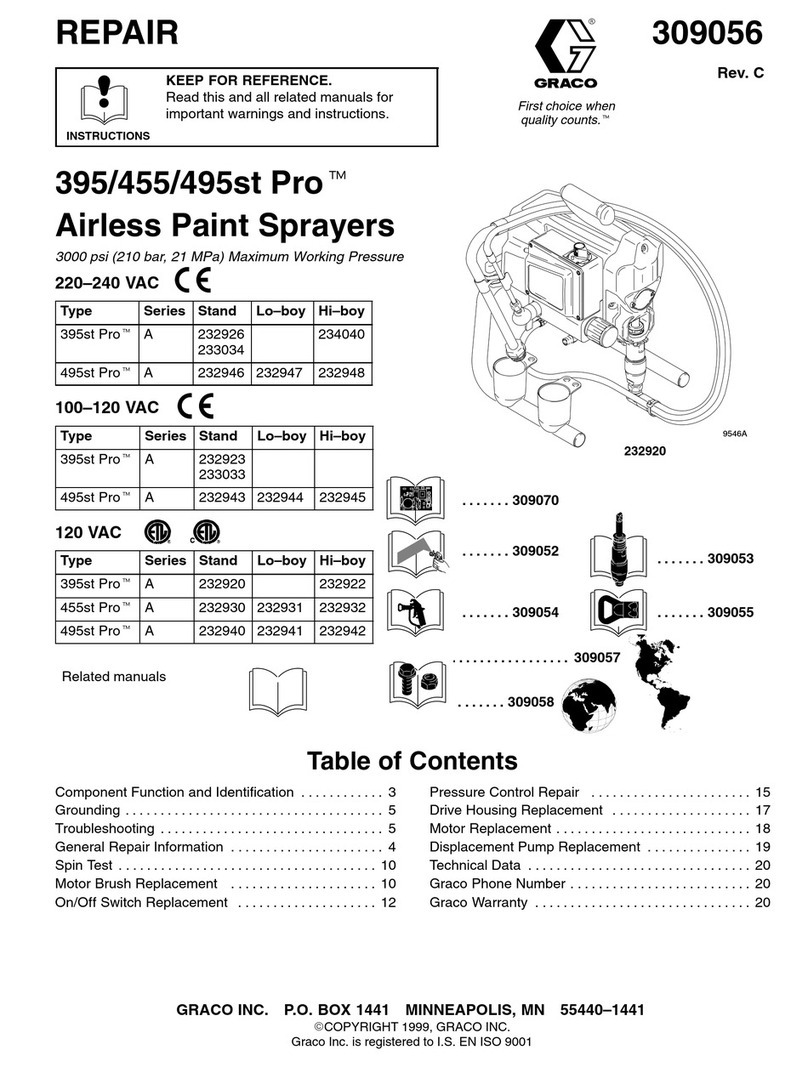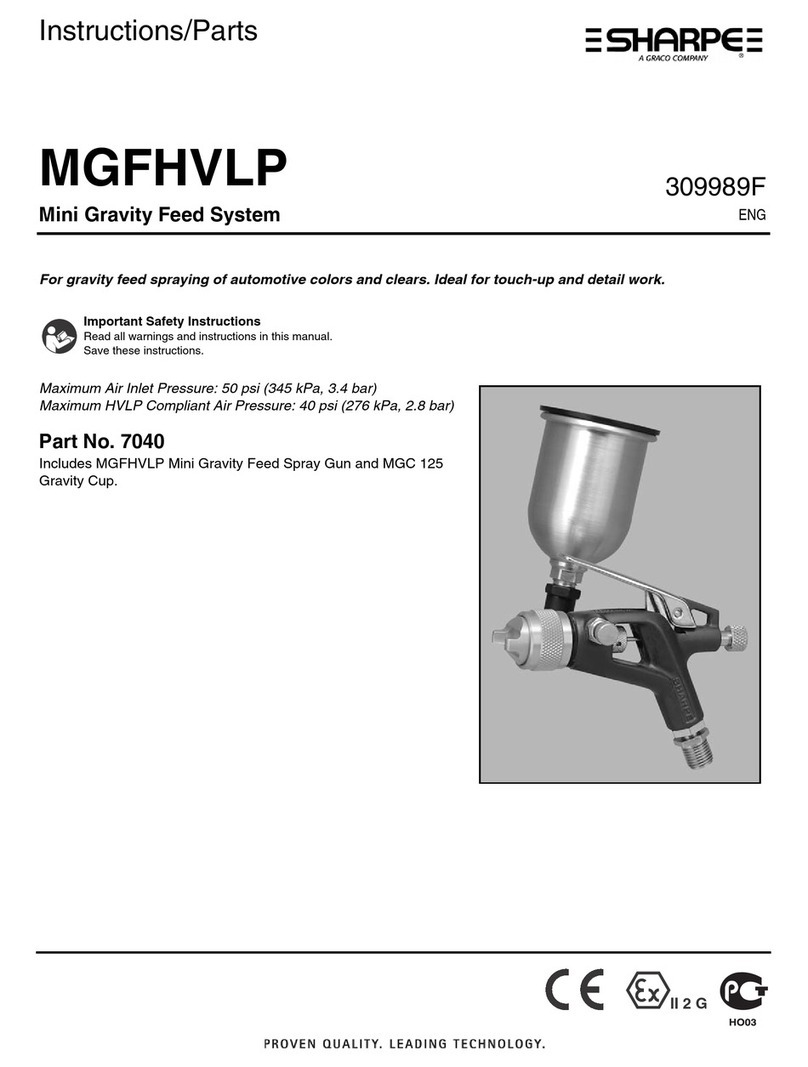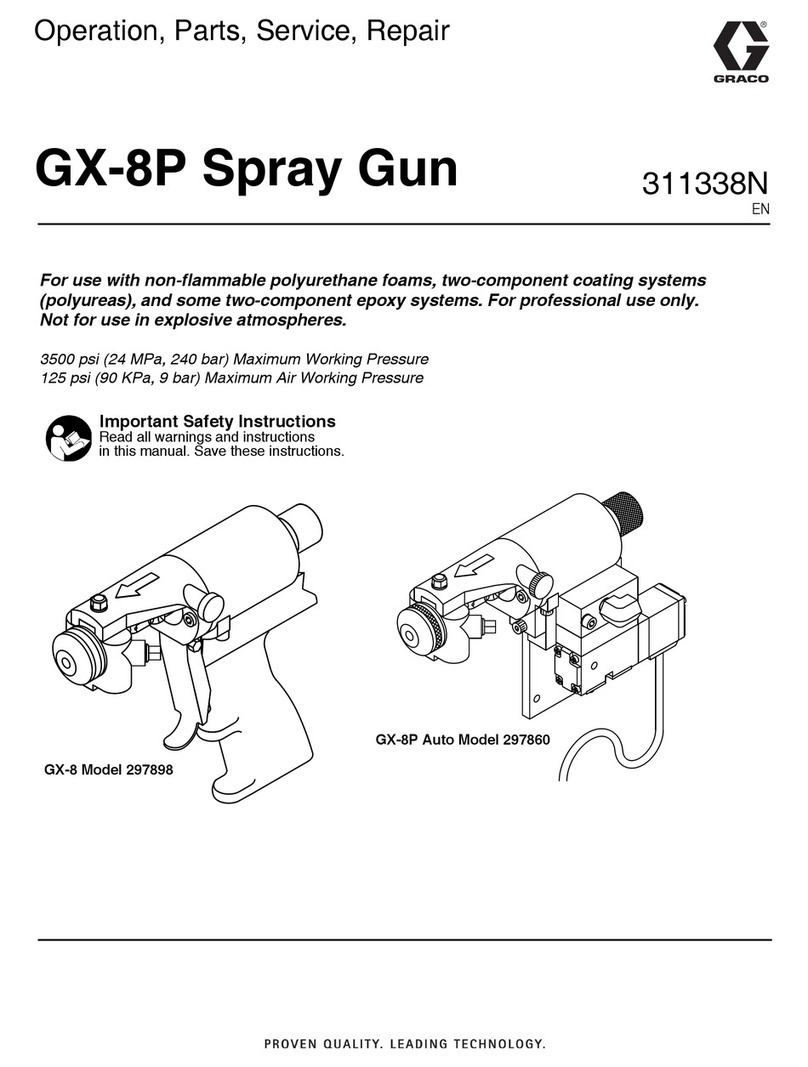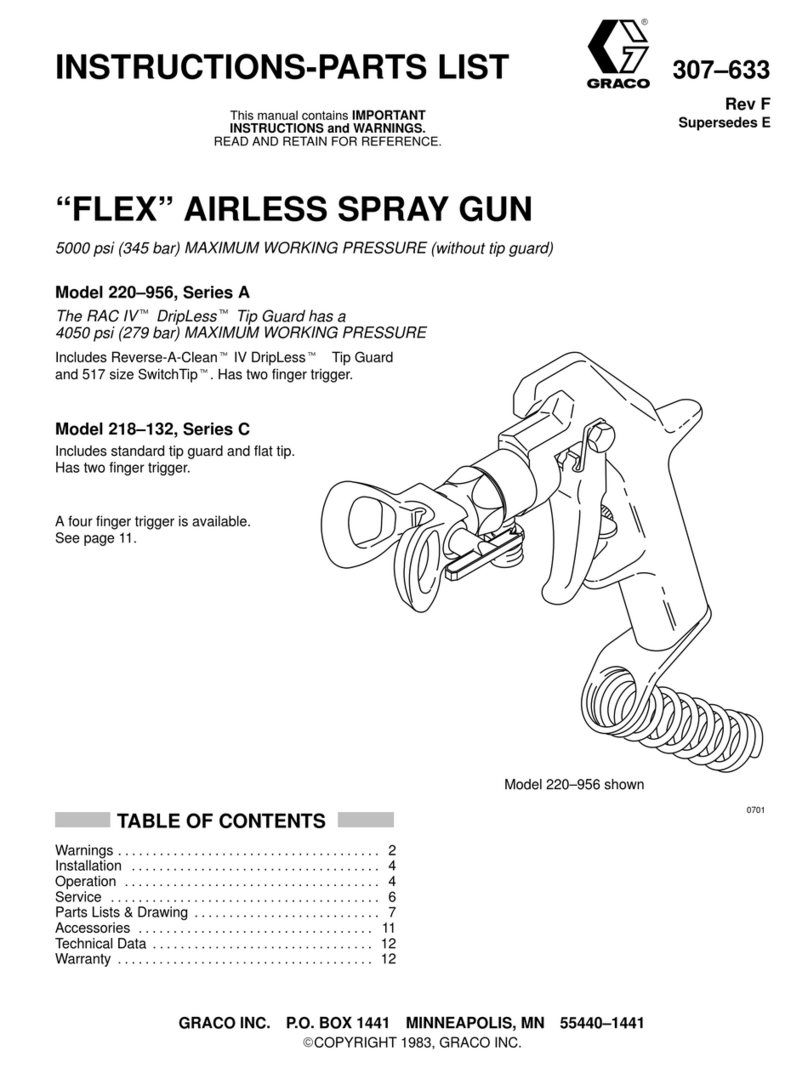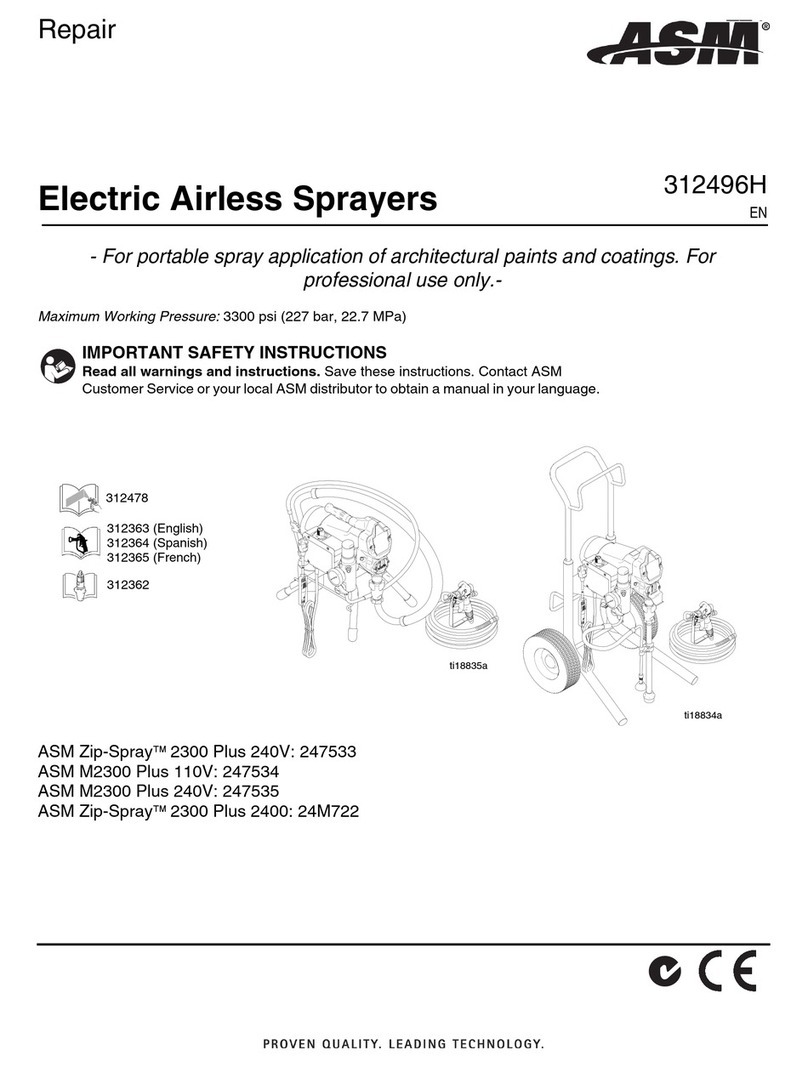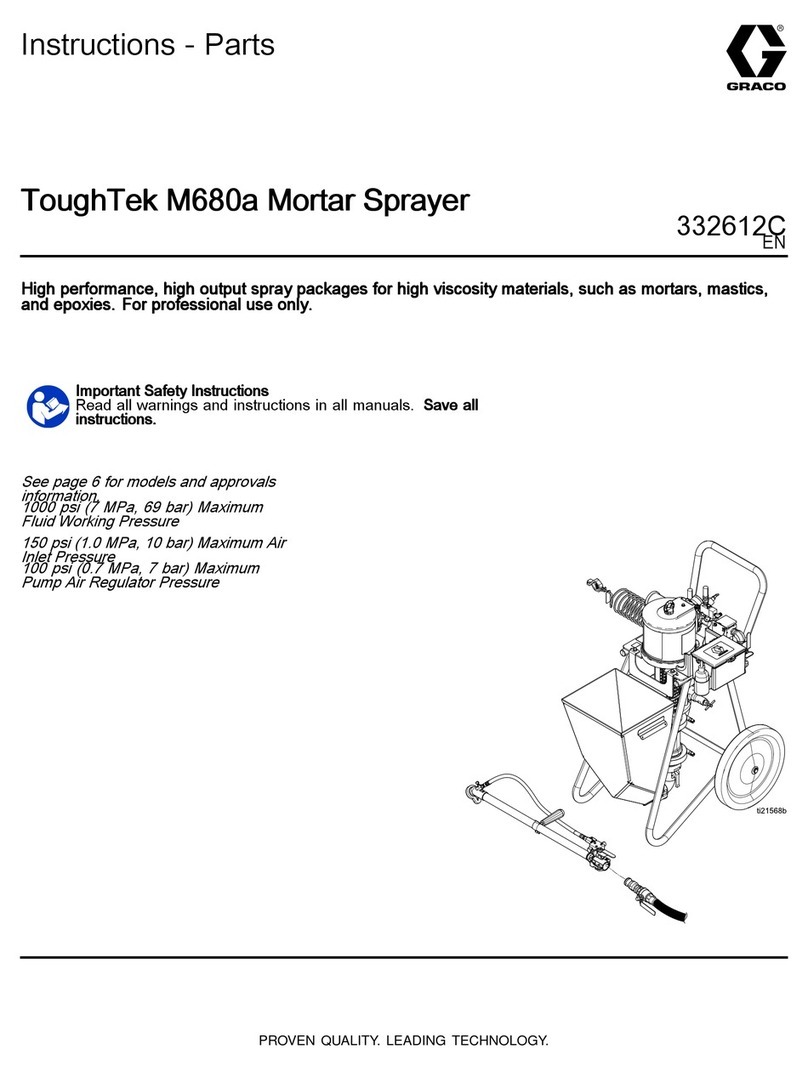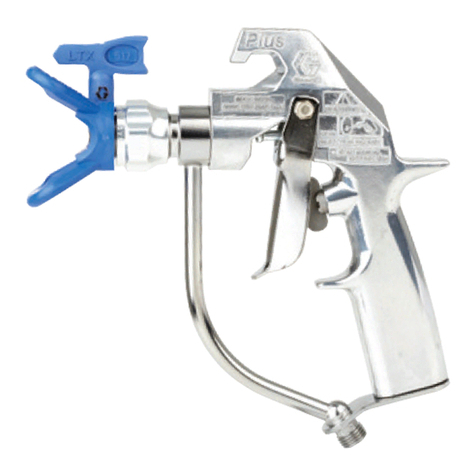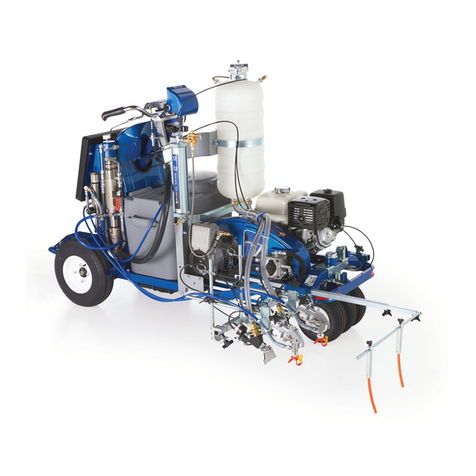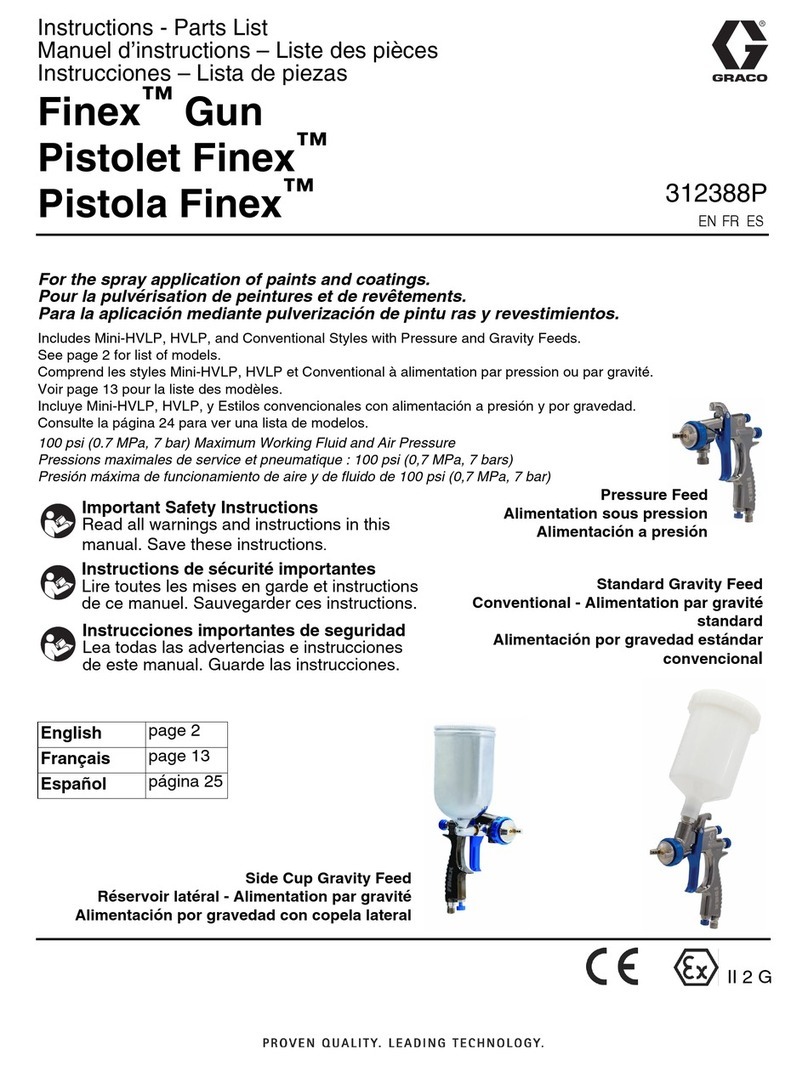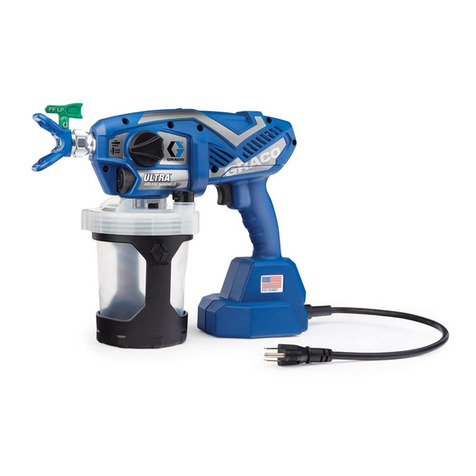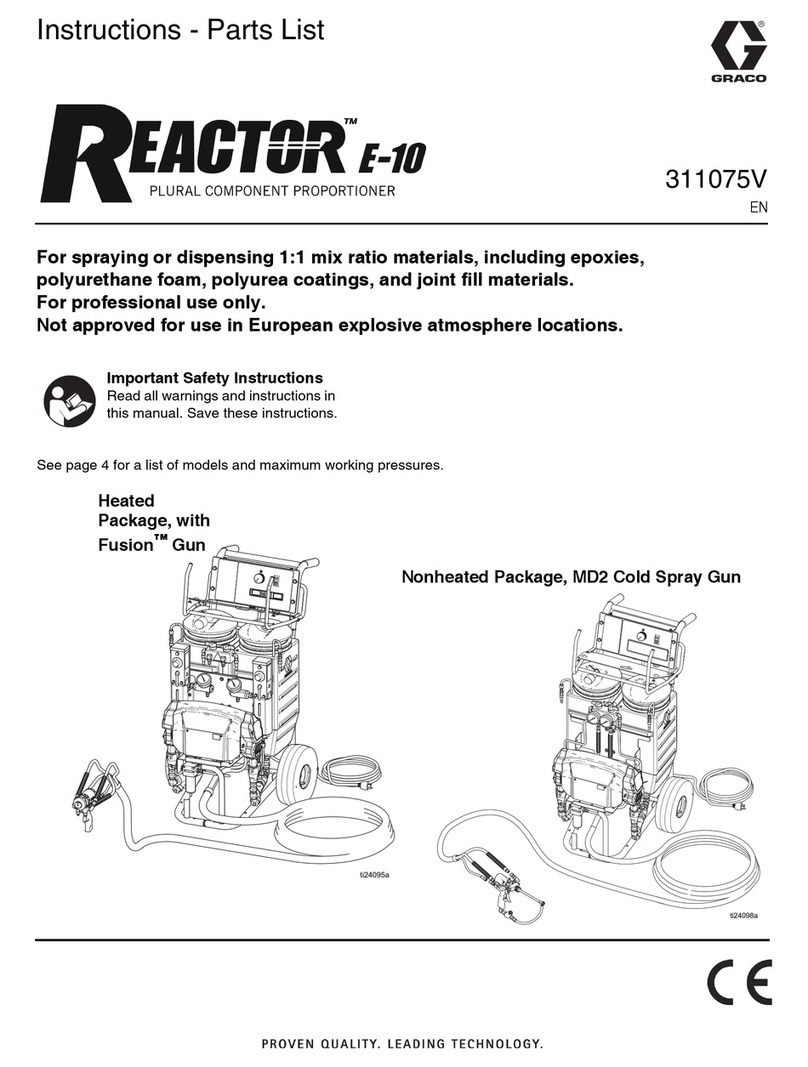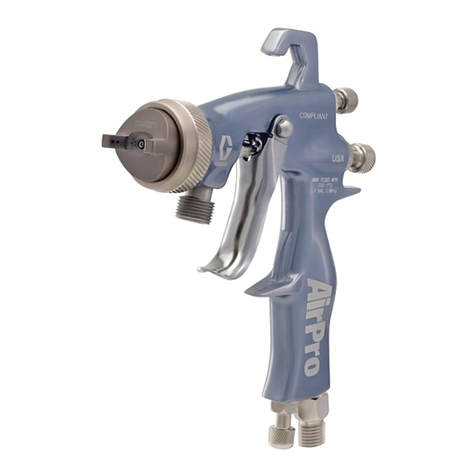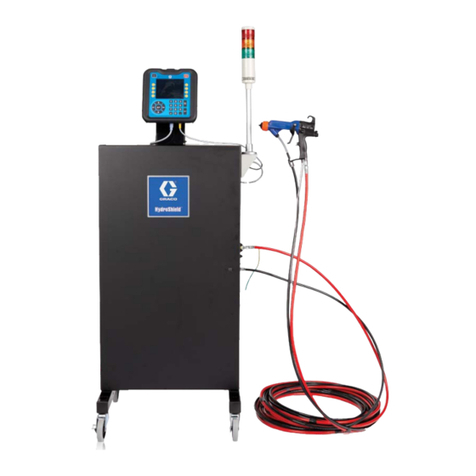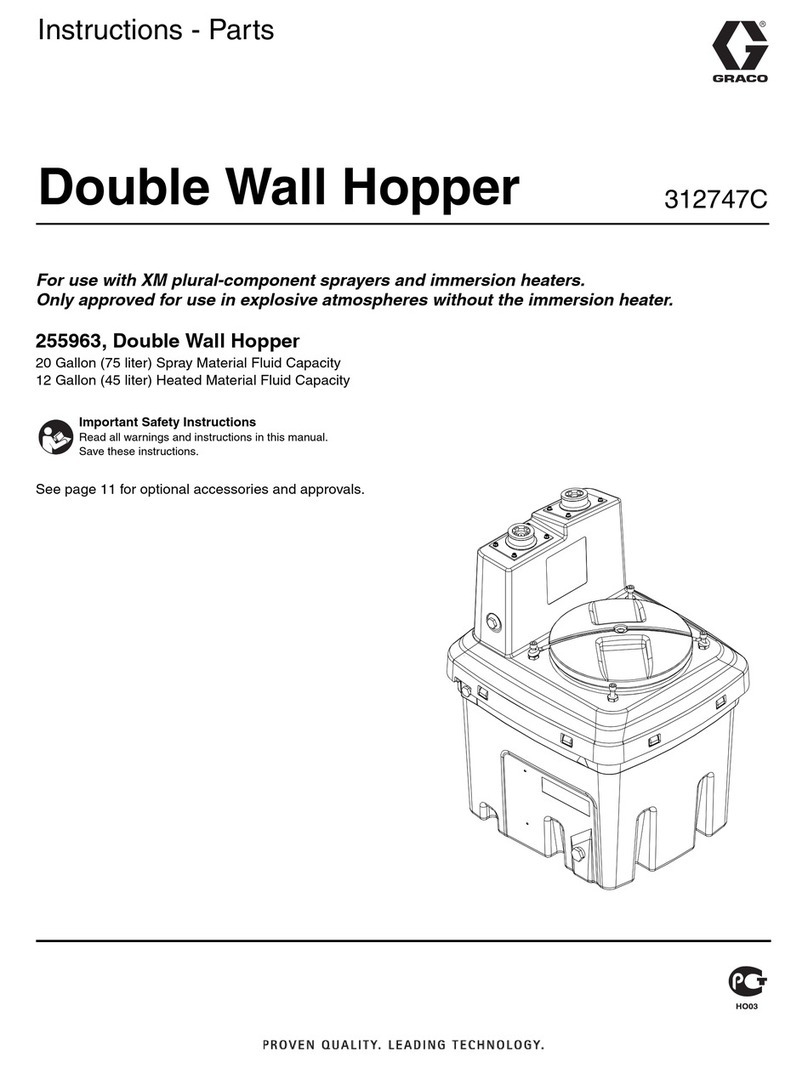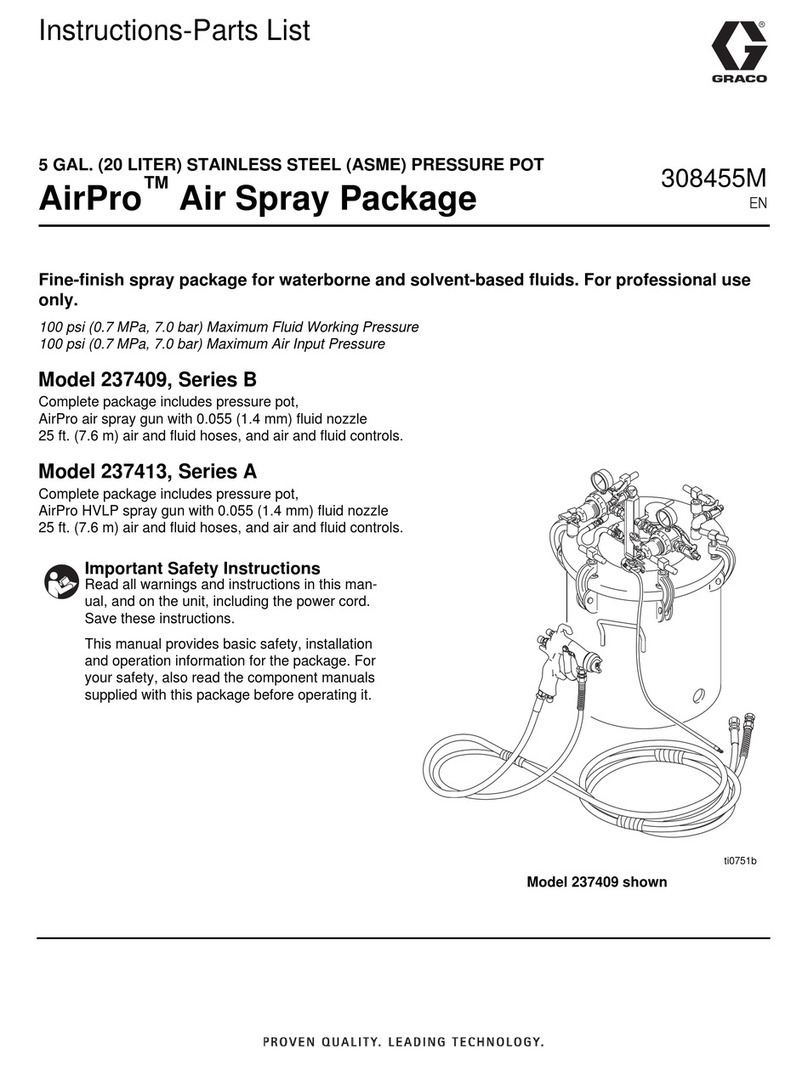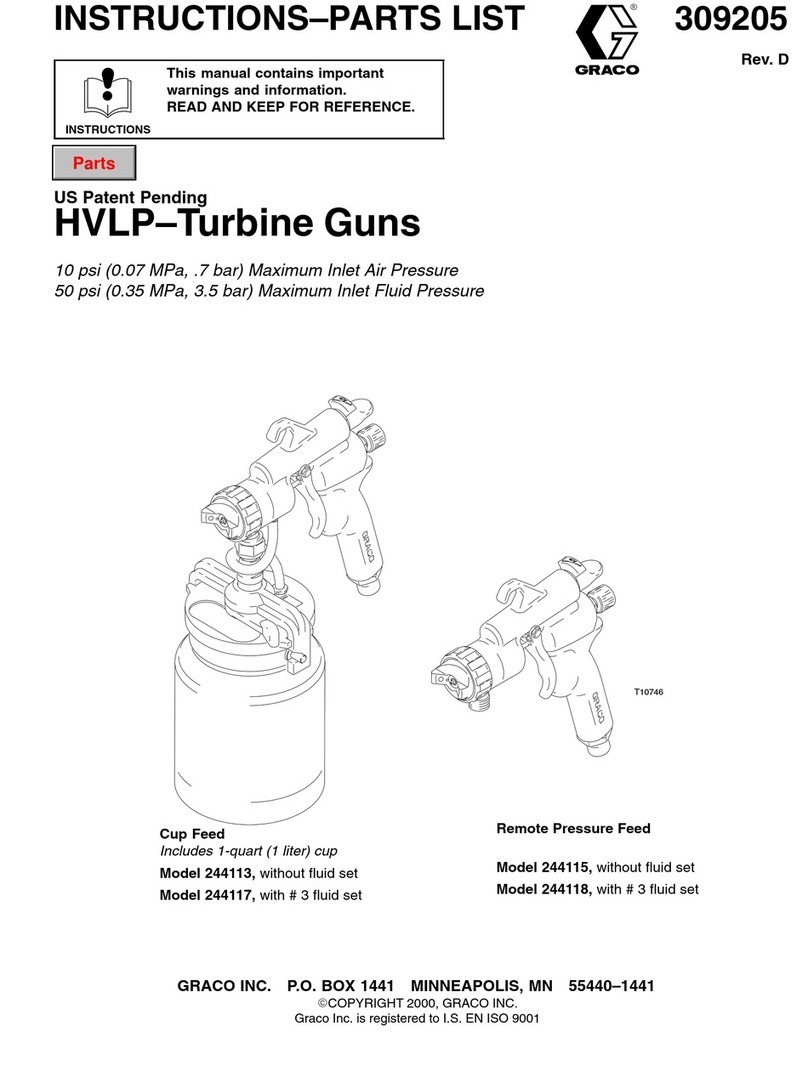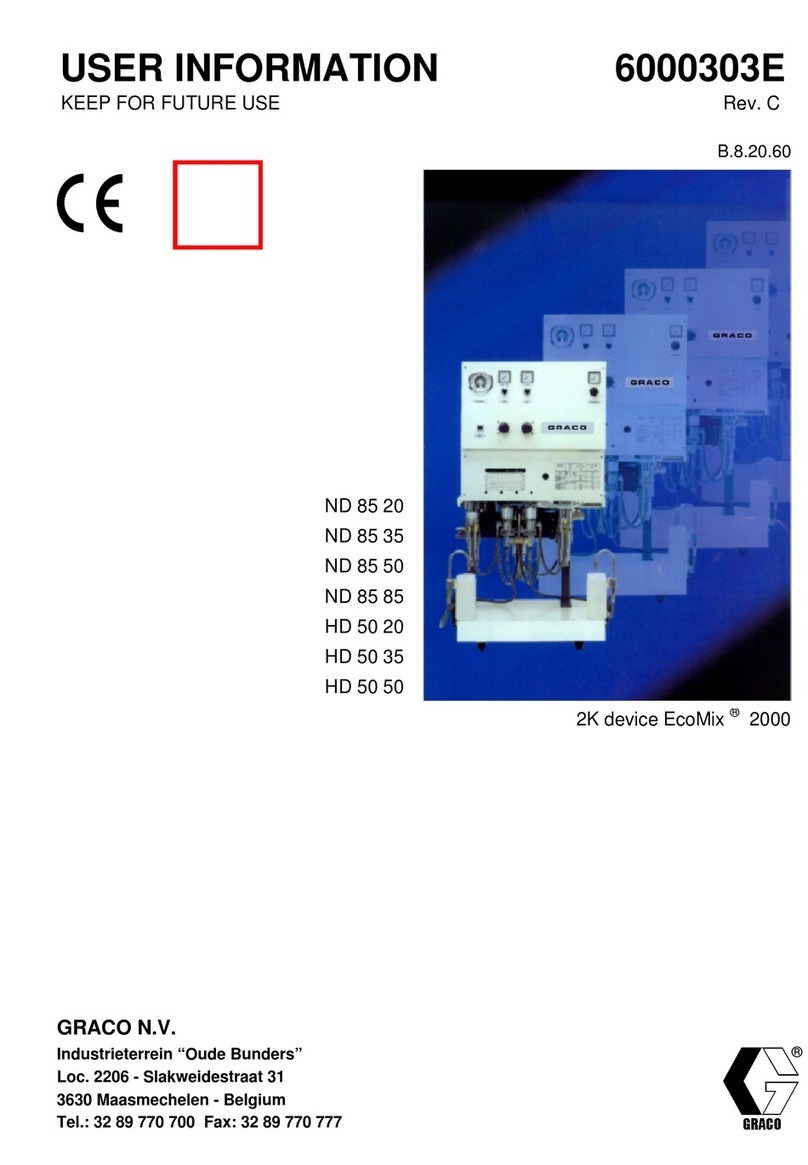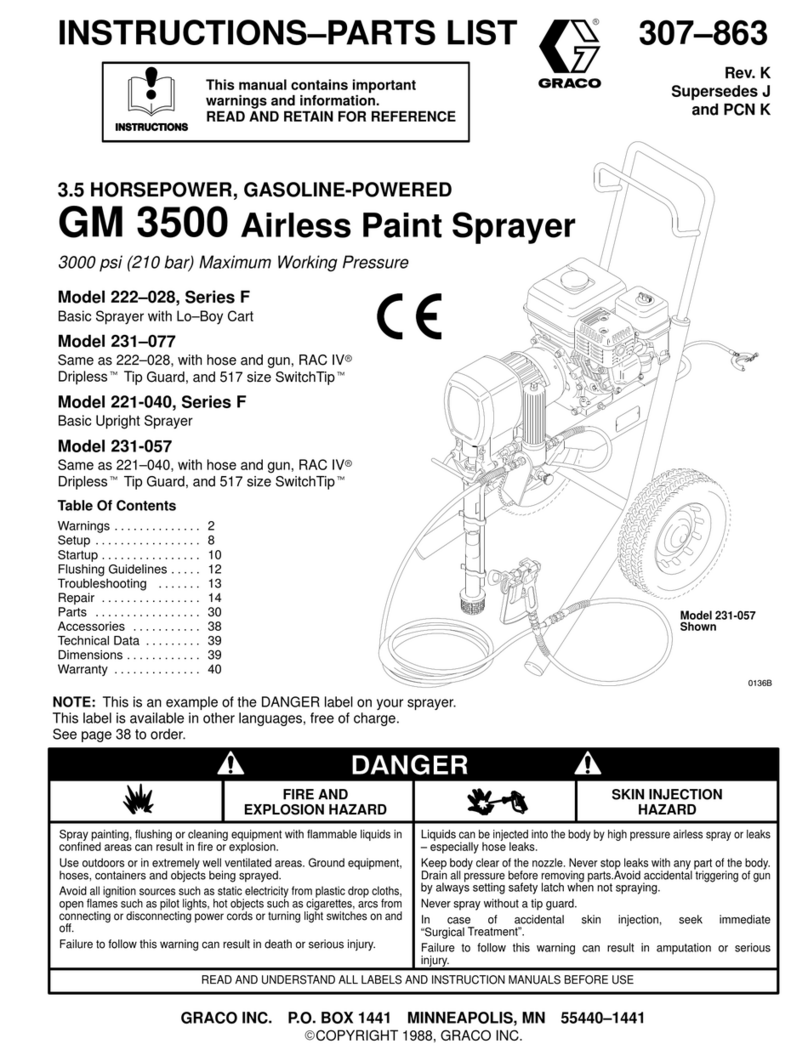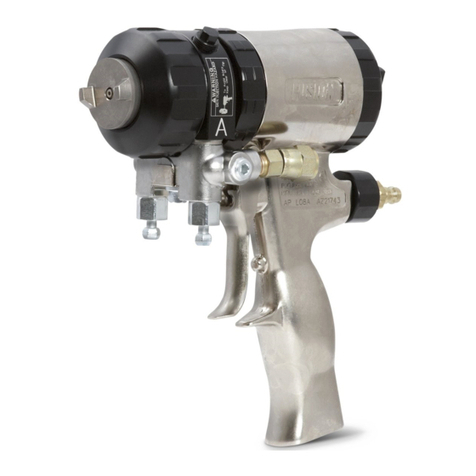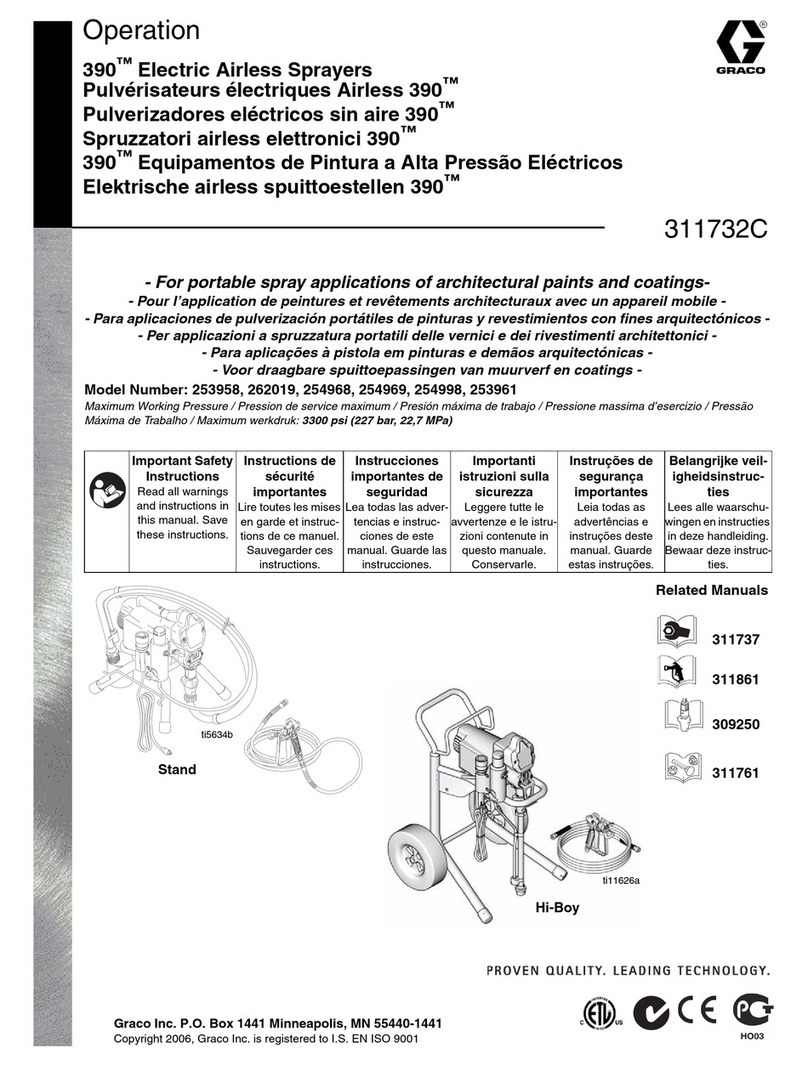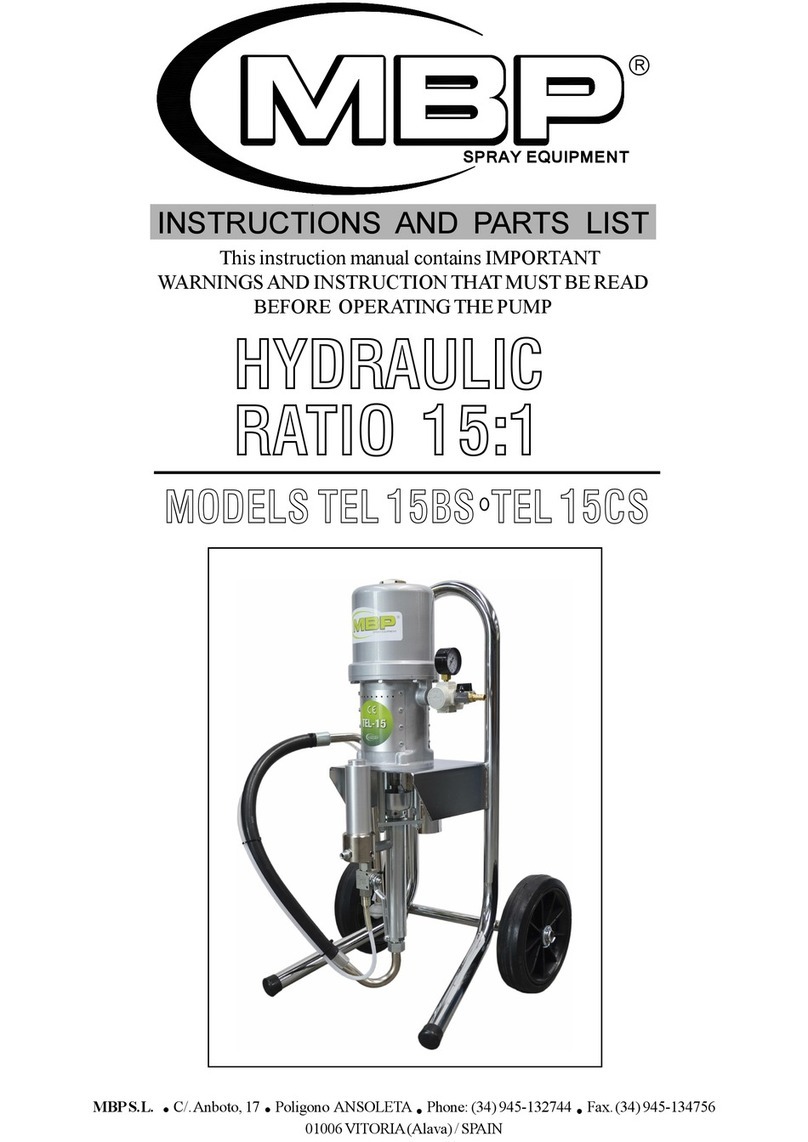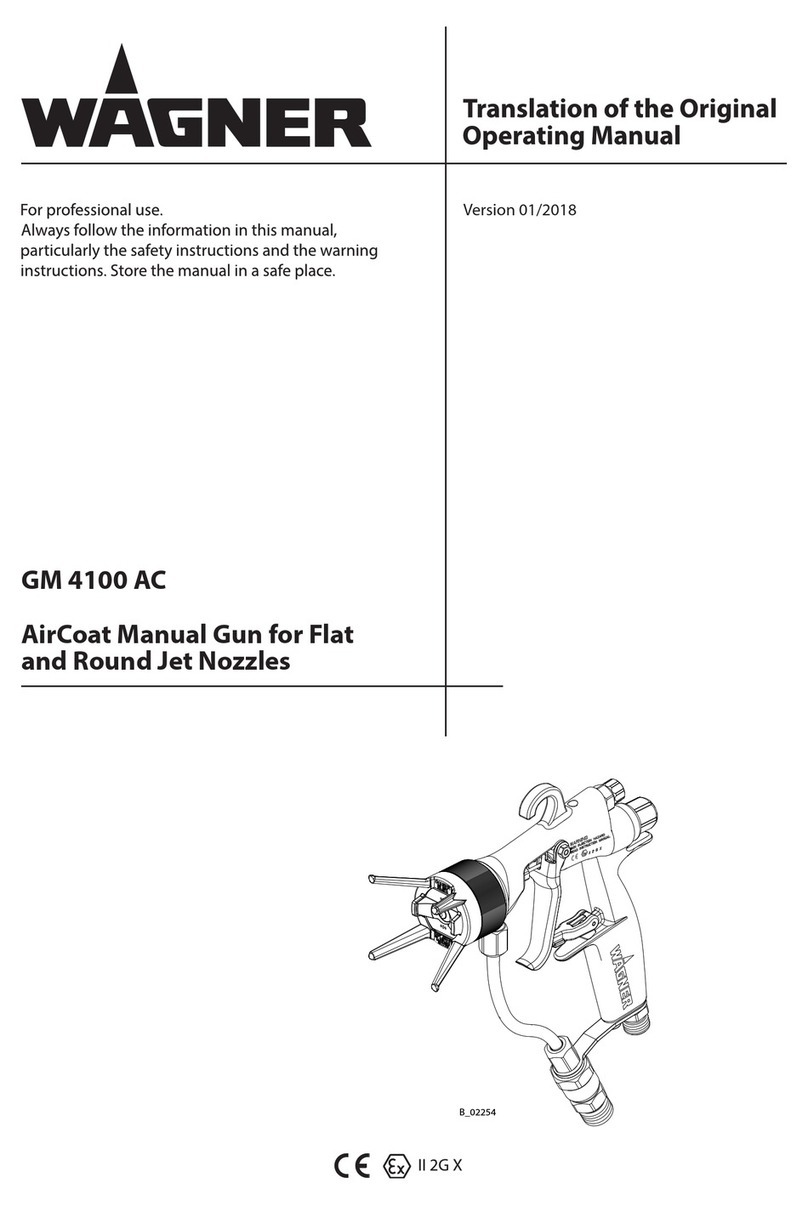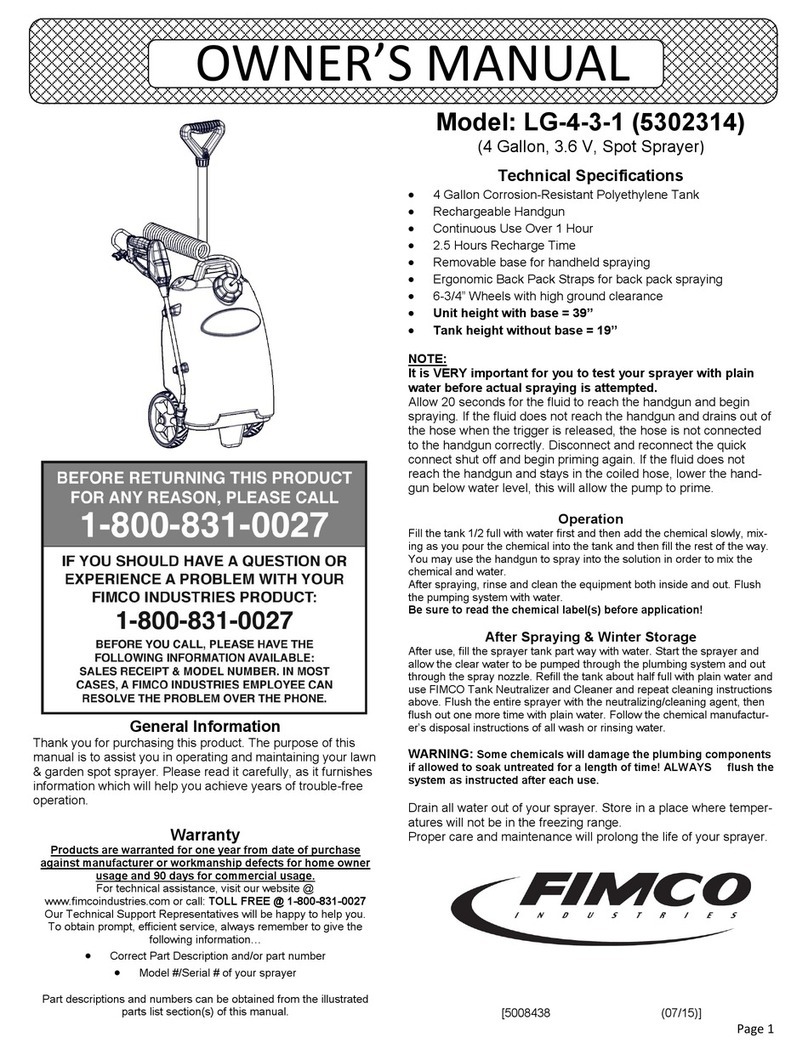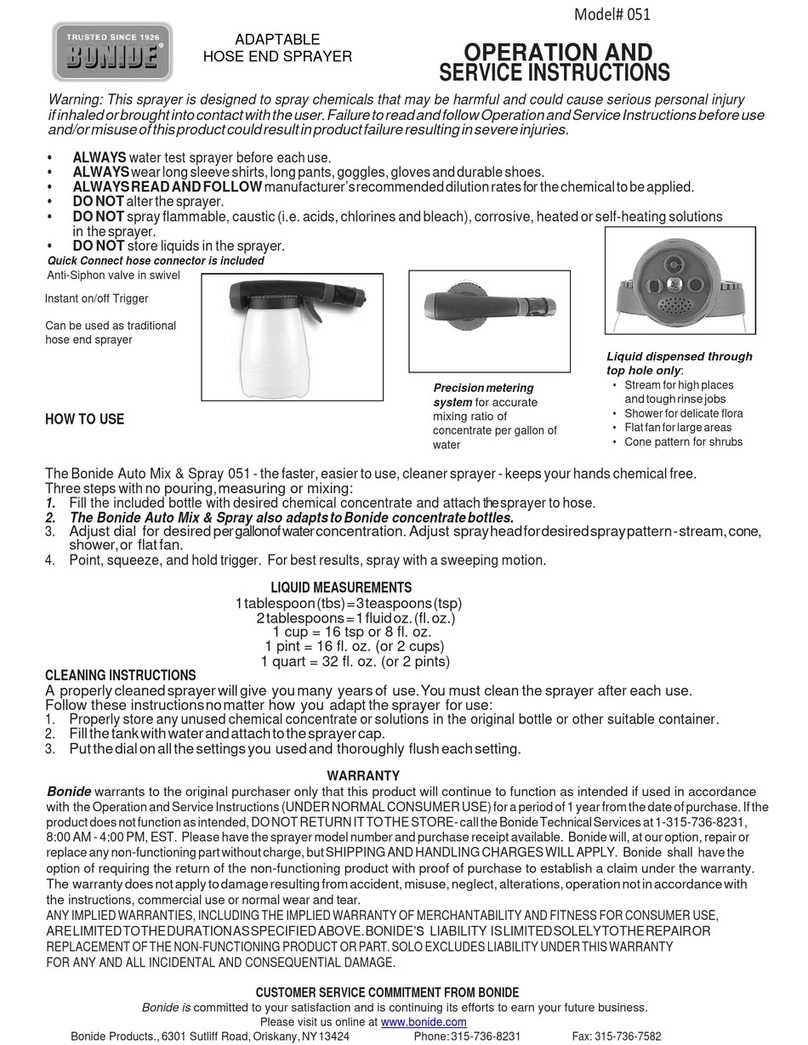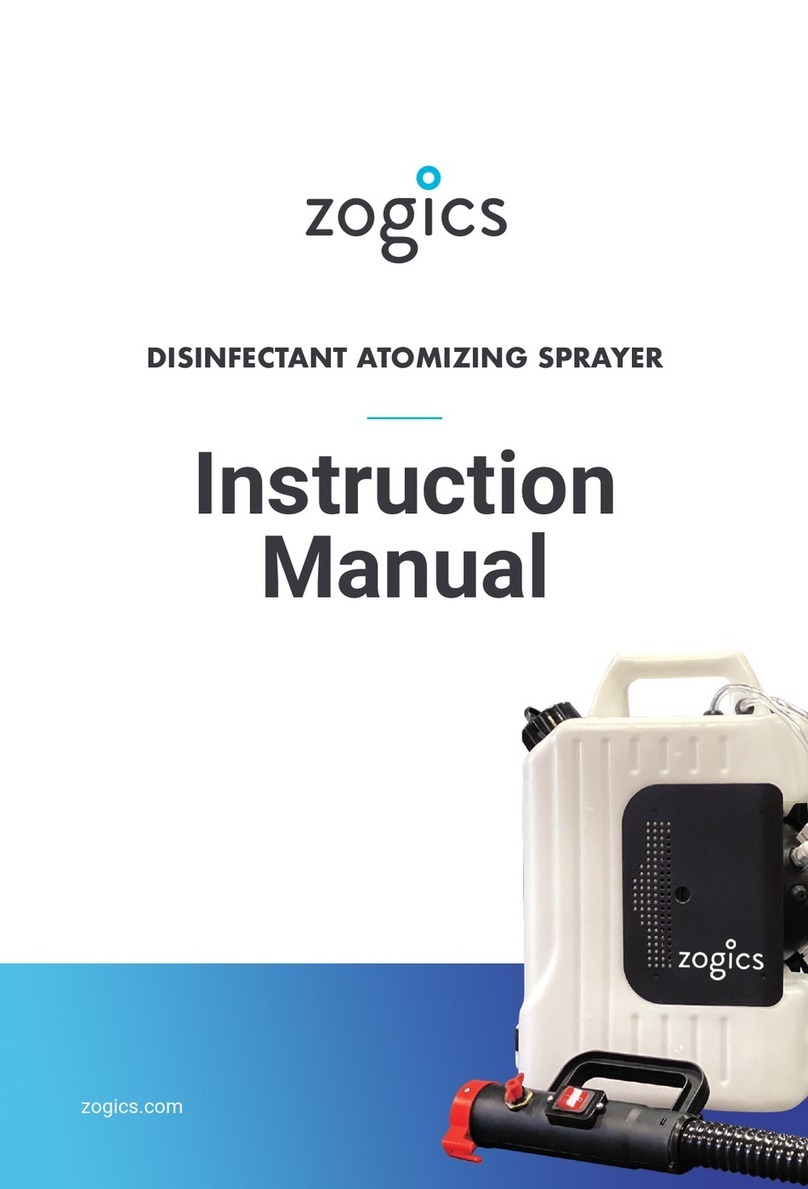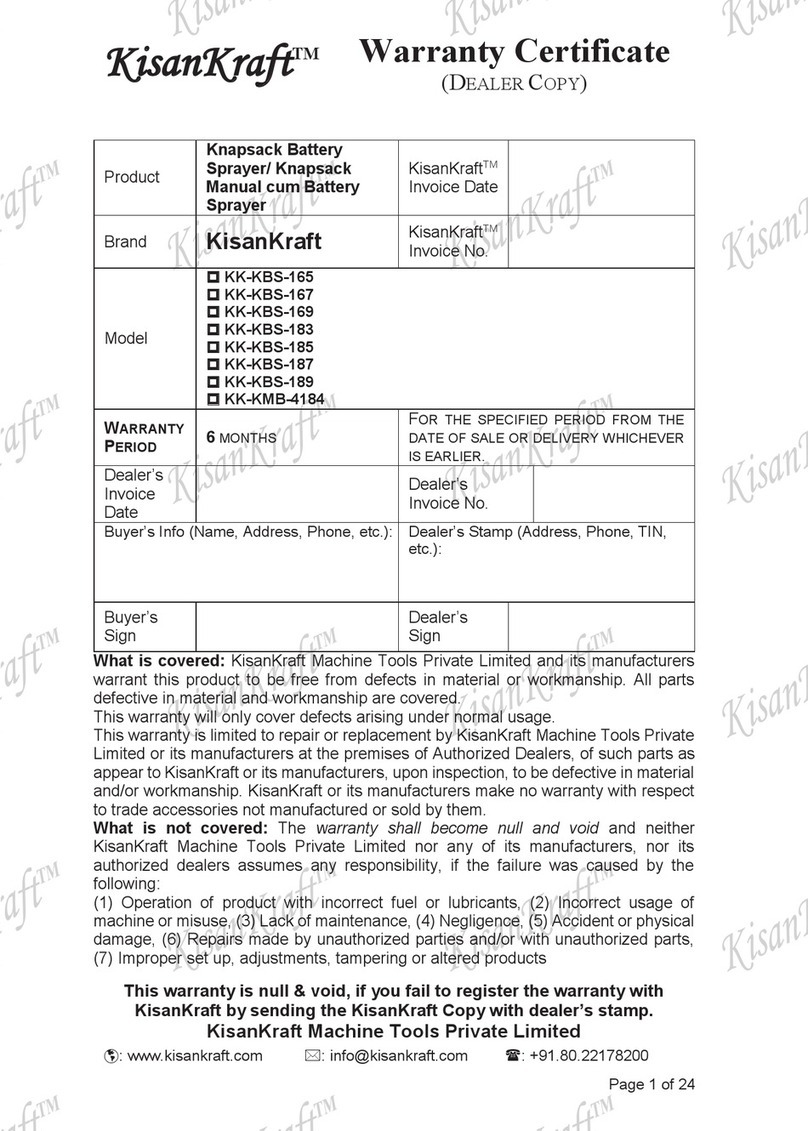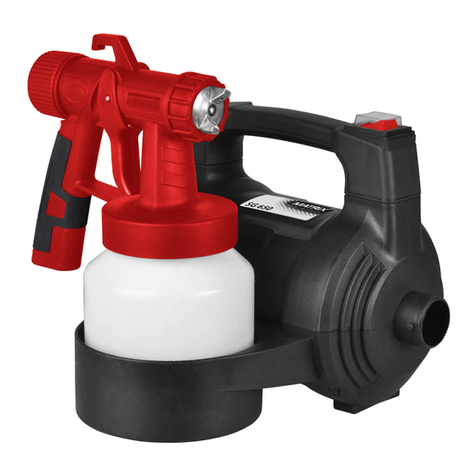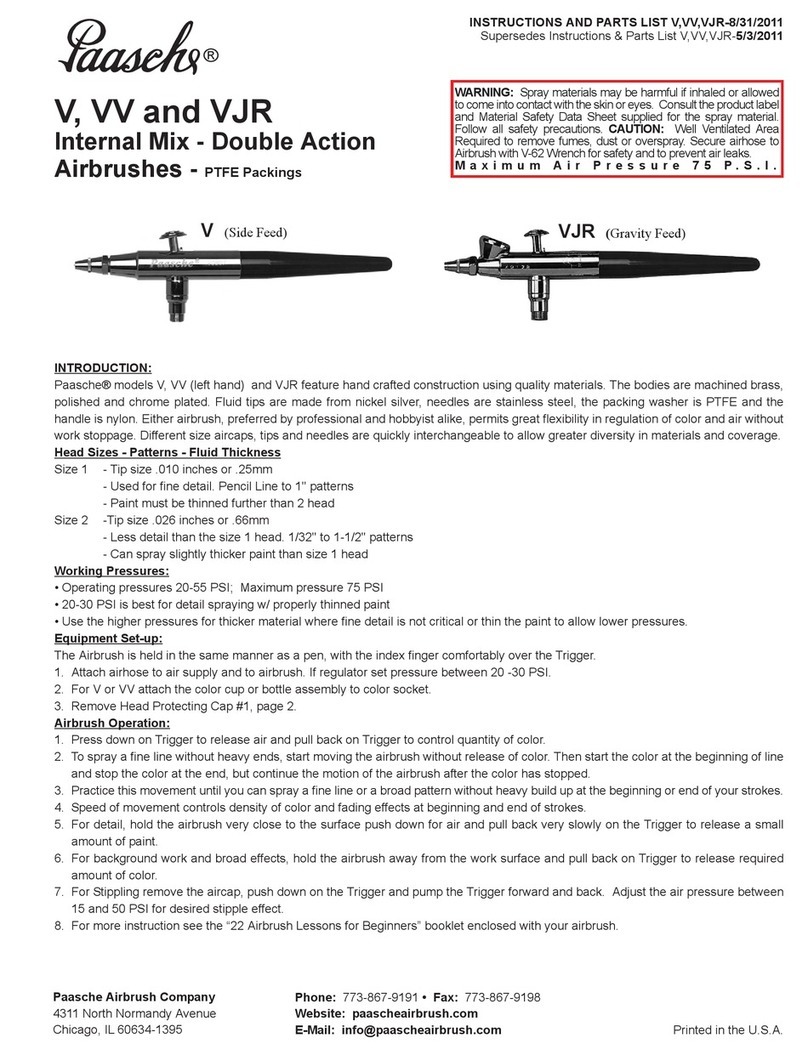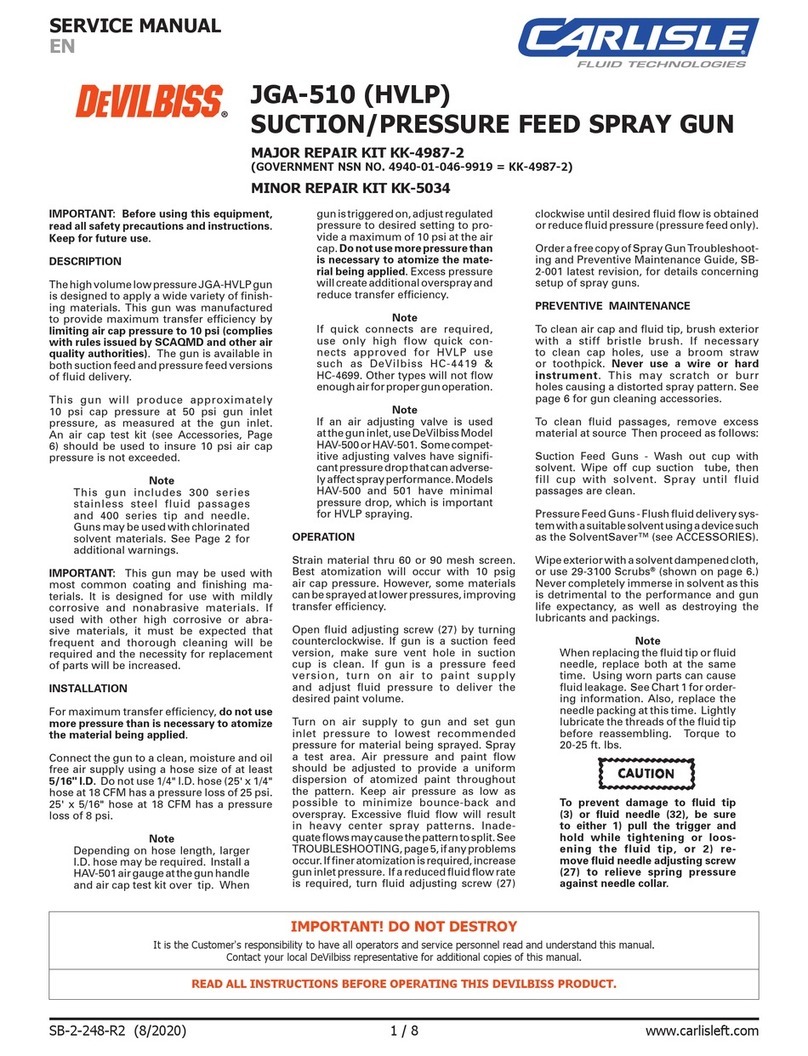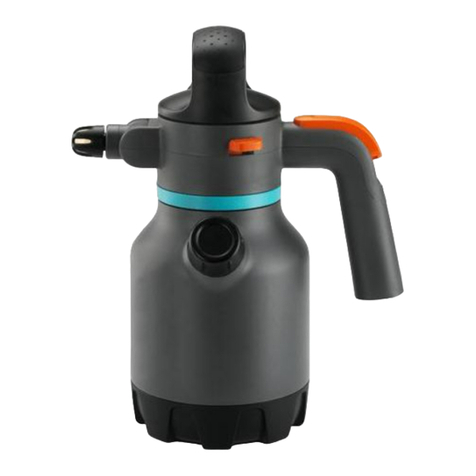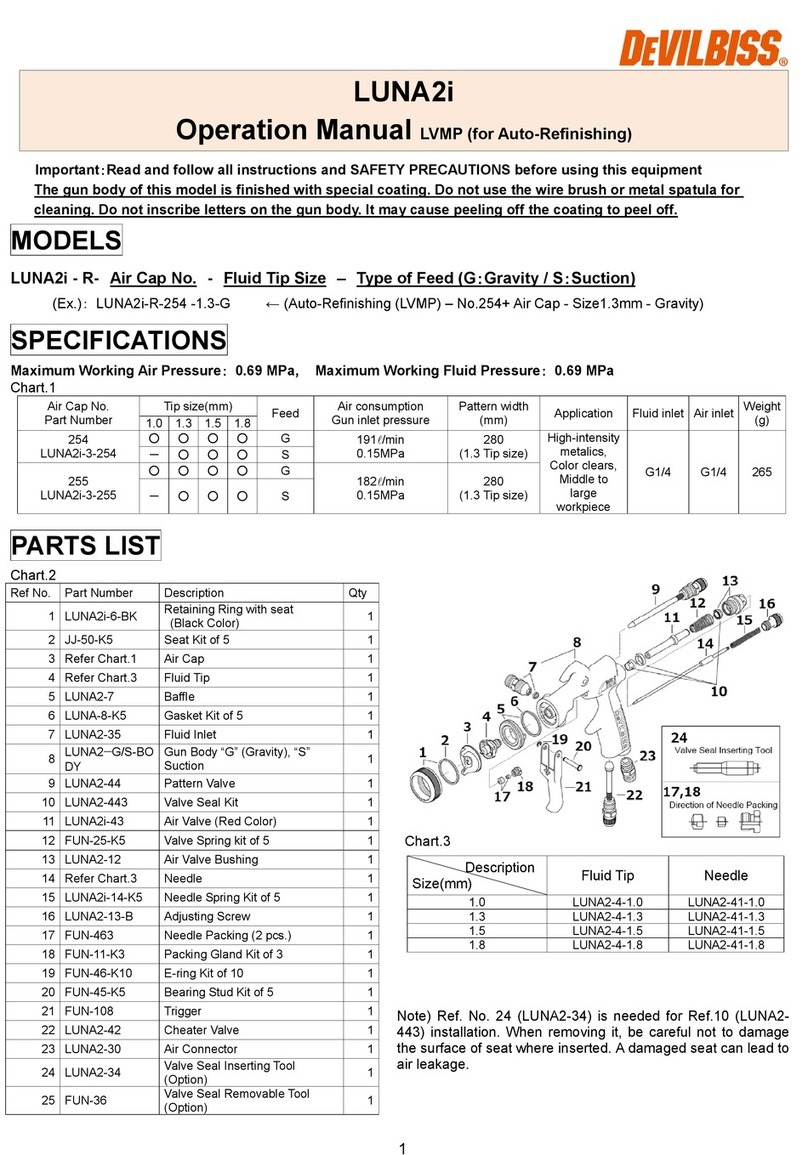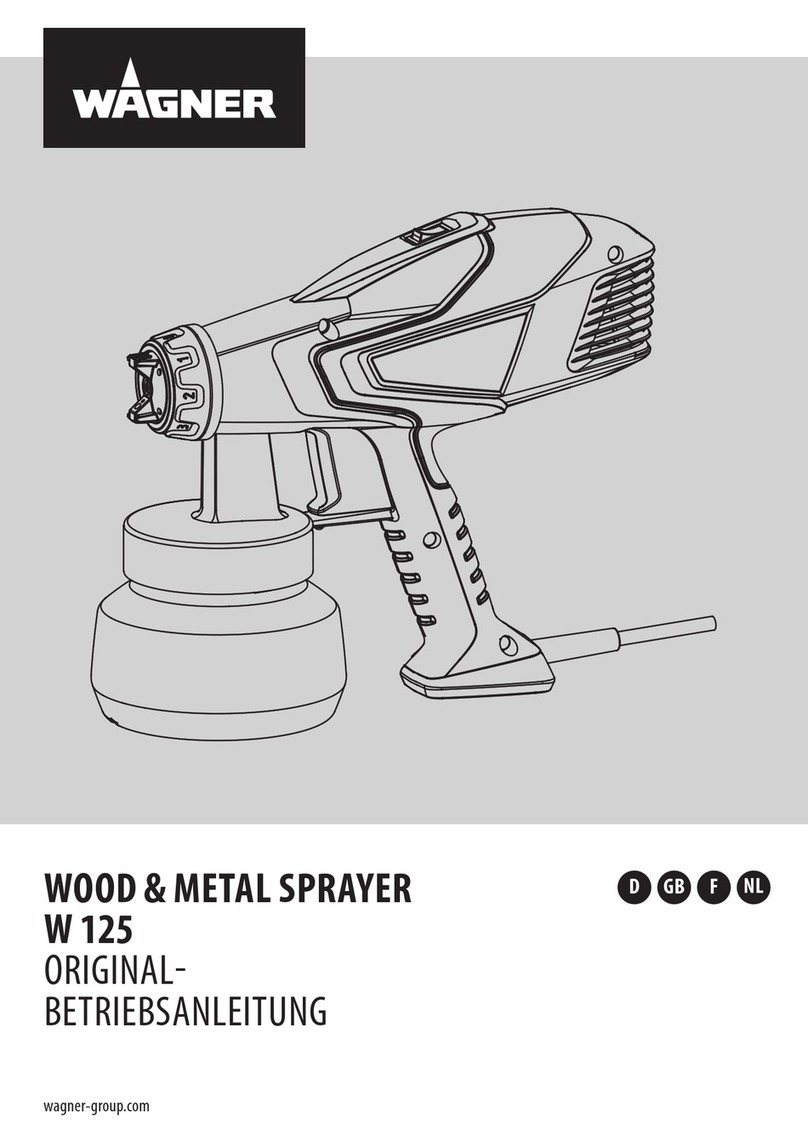
Operation
Pressure Relief Procedure
PRESSURIZED
EQUIPMENT HAZARD
The system pressure must be manually
relieved to prevent the system from
starting or spraying accidentally
. Fluid
under high pressure can be injected through the
skin and cause serious injury
. T
o reduce the risk of
an injury from injection, splashing fluid, or moving
parts, follow the
Pressure Relief Procedure
whenever you:
D
are instructed to relieve the pressure,
D
stop spraying,
D
check or service any of the system equipment,
D
or install or clean the spray tip.
1. T
urn of
f the air and fluid supply to the gun.
2. T
rigger the gun into a grounded metal waste
container to relieve system pressures.
Filter the Fluid
Strain
or filter the paint to remove coarse particles and
sediment, then check the viscosity of your paint. Refer
to page 5 for the proper viscosity
.
Install the air cap (38). See Fig. 2.
The direction of the spray pattern is controlled by the
position of the air cap. The horns of the air cap should
be the opposite direction (horizontal or vertical) of the
desired direction of the spray pattern. T
o change the
spray pattern, first
relieve the pressure, then loosen
and turn the air cap to the desired position, and hand
tighten the air cap (38) securely
.
Adjusting the Spray Pattern
To
minimize overspray
, adjust the pattern for each part
being coated.
For maximum flow
, leave the fluid adjusting knob (18)
in the full open position. See Fig. 2.
The air adjusting screw (33) controls the pattern
shape, the fluid adjusting screw (18) controls the
volume of the fluid output, and the atomizing air regu
-
lator controls the degree of atomization.
Adjust the Pattern Size
T
urn the air adjusting screw (33) out (counterclock
-
wise) to make the spray pattern wider and flat, or in
(clockwise) to decrease to a round pattern.
Adjust the Fluid Output or Pressure Feed
T
urn the fluid adjusting screw (18) out all the way
(counterclockwise). Then adjust the air pressure at the
fluid supply until the desired flow is obtained. For the
final adjustment, turn the fluid adjusting valve in (clock
-
wise) to reduce the volume of fluid output to obtain the
desired results
NOTE:
If the fluid adjusting valve is turned in all the
way
, the gun will emit only air
.
T
est Spray Pattern
Hold the gun about 10 in. (254 mm) away from the
surface of the test piece. Adjust the air pressure to the
gun until proper atomization is achieved. Always use
the lowest possible atomizing air pressure to obtain the
desired results.
Normal Spray Pattern
Proper adjustment will give a spray
pattern shaped like this.
See
Troubleshooting Chart
on page 10 for the cause
and solution of improper spray patterns.
